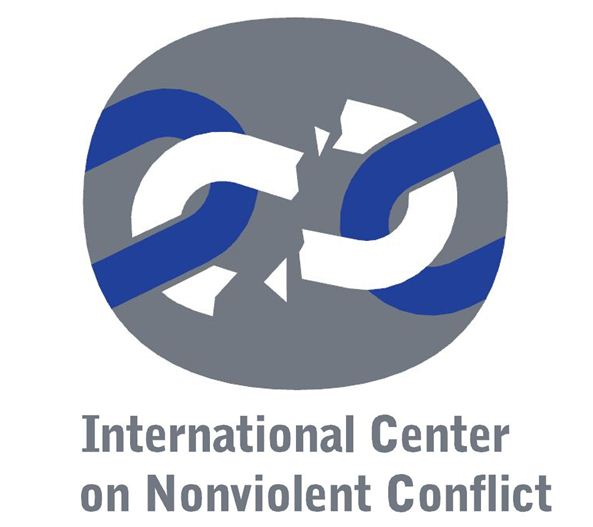India
Includes chapters on Brazil, Colombia, Cuba, Guatemala, India, Mexico, South Africa and Zimbabwe (the latter refrains from discussing the human rights issues of the government sponsored post 1996 land occupations). Not all chapters discuss social movements, but the book does cover gender and indigenous issues.
Sruti Bala comes from the state of Tamil Nadu in southern India. In her dissertation on nonviolent protest she discusses some significant elements of nonviolent resistance such as 'action', 'play' and display'. She also tries to define certain consequences of nonviolent protest for political identity. Finally, these conclusions are related to the ideas of Gandhi and Khan Abdul Ghaffar Khan (the 'Frontier Gandhi').
Collection of essays by academics and activists on condition of women in colonial and independent India, and the challenges to Indian feminism from globalization and the Hindu Right. Indicates a vigorous if uneven women’s movement over several decades.
Reprinted by New York, Garland, 1972, pp. 351.
Respected early analysis of satyagraha with emphasis on strategy. Also comments on role of nonviolent action in democratic states in resisting an invasion.
Political theorist and Gandhi scholar Parekh has also written a brief account of Gandhi’s life and work: Bhikhu Parekh, Gandhi, Oxford, Oxford University Press, 1997 , pp. 111 .
Traces development of the ‘tree hugging’ movement to protect Himalayan forests, stresses the importance of the Gandhian style legacy in the strategy and tactics of the movement, discusses the role of women and profiles the leading men.
Popovic, an activist against the Milosevic regime in Serbia in the 1990s, went on to find CANVAS, which has offered advice and nonviolent training to activists in former Soviet states and other parts of the world, including Egypt before Tahrir Square and Syria. The book emphasizes the role of CANVAS (but does not address criticism of its role) and foregrounds the author's own experiences and interpretation of nonviolent action. It covers many varied campaigns with examples of how to mobilize successfully and use humour and imaginative forms of protest. It also addresses how to make oppression 'backfire' and the need to persevere in one's effort after apparent success. Written for activists rather than for scholars of nonviolence.
Selected key texts from Gandhi with essays by Judith Brown, Richard Falk, Michael Nagler, Glenn Paige, Bhiku Parekh and others.
The survey reports on the worst countries in the world for women in terms of health (e.g. maternal mortality, lack of access to health care facilities, lack of control over reproductive rights); discrimination (e.g. over land rights, job rights, property or inheritance); culture and religion (e.g. acid attacks, FGM, forced marriages); sexual violence (e.g. Rape, rape as a weapon of war, domestic rape or by a stranger); non-sexual violence (e.g. domestic violence); and human trafficking (including domestic servitude, forced labour, sexual slavery and forced marriage). The methodology is outlined and each listed country is fully described in each of the categories explored by the survey.
Anti-dam resistance persuaded the World Bank to withdraw from funding one of the dams, but did not change Indian government policy.
This work examines the role of NGOs in protest against violence and harassment against women. The aim is to show that women are not just victims, but also rational actors, and to inspire courageous and nonviolent responses to harassment.
See also the book Gautam Bhan, Kalyani Menon-Sen, Swept Off the Map: Surviving Eviction and Resettlement in Delhi, New Delhi, Yoda Press, 2008
Examines women’s resistance to war in many parts of the world, including Sierra Leone, Colombia and Gujarat, India. It also covers women’s cooperation across enemy lines in the former Yugoslavia and in Israel/Palestine, and resistance in the west to imperialist war, and develops theoretical questions about gender and militarism. See also: Cynthia Cockburn, Women in Black: The Stony Path to “Solidarity”, In Howard Clark, People Power: Unarmed Resistance and Global Solidarity (A. 1.b. Strategic Theory, Dynamics, Methods and Movements) London, Pluto Press, 2009 , pp. 156-163
Sympathetic yet objective biography with an emphasis on political tactics and organisation.
This is an anthology of Gandhi’s writings on ethical-political orientations and his teachings on nonviolence. The first part covers the fundamental principles of nonviolence, including the difference between the nonviolence of the strong and the nonviolence of the weak; the relationship between ends and means; and his perspectives on violence and war. In the second part, Pontara discusses practical aspects relating to preparation for a nonviolent struggle and elucidates different nonviolent techniques.
By respected writer on anarchist theory and movements.
Commentary by Booker-winning novelist and prominent Narvada Dam activist on struggle against the Sardar Sarovar Dam and the wider implications of government policy on building dams. Also available in various forms on the internet.
Through detailed analysis of Gandhi's campaigns from 1915 to 1922 the author illuminates the evolution of Gandhi's thinking and strategy. Overy stresses the importance of Gandhi's constructive programme, promoting local empowerment, and its interconnectedness with resistance campaigns against imperial rule.
Covers range of environmental campaigns in different parts of the world, including Ireland, France, Israel, Japan, India and Indonesia.
Originally published in Dissent.
Raises caveats about comparisons with Gandhi, discusses Hazare’s diagnosis and prescriptions for corruption and comments on the nature of the Hazare movement. Argues against claims that it is a pawn of the extreme right RSS and/or CIA, noting the extent of mass protests and the depth of anger about corruption.
Analysis of Gandhi’s concept of satyagraha, of his political leadership and and of the 1931 Salt Satyagraha and 1947 fast, as well as covering critiques by contemporaries and making comparisons with Martin Luther King and Malcolm X.
This article explores some feminist voices from India, especially one of a Dalit feminist, and two Northeastern feminists, and identifies certain views on common issues that bind them together. It also looks into the different priorities of each of these feminists, in order to understand the contexts, cultures and experiences that have shaped their primary concerns.

 The online version of Vol. 1 of the bibliography was made possible due to the generous support of the
The online version of Vol. 1 of the bibliography was made possible due to the generous support of the  The online version of Vol. 2 of the bibliography was made possible due to the generous support of
The online version of Vol. 2 of the bibliography was made possible due to the generous support of